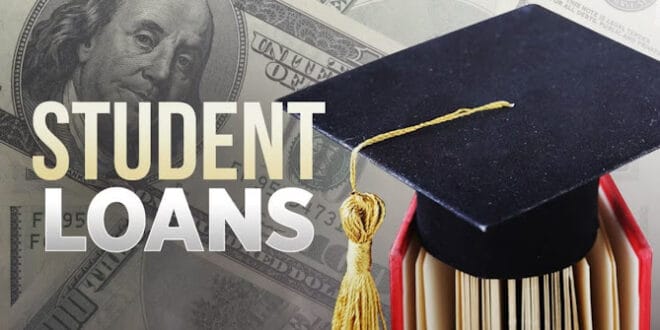Student loans are financial aids given to students to help them pay for their college or university education. Student loans have become a necessity in the United States, as tuition fees have been increasing steadily over the years. With the average cost of tuition and fees at a four-year public college reaching $10,560 per year, it has become nearly impossible for students to pay for their education without taking out a student loan.
Also read: Best Home Refinance Companies in Usa
What is Student Loan?
A student loan is a financial aid given to students to help them pay for their college or university education. The loan is typically issued by the government or private financial institutions, such as banks or credit unions. The loan has to be paid back with interest, but the interest rates are usually lower than other types of loans. The repayment period for a student loan can range from ten to thirty years, depending on the type of loan and the terms of the lender.
6 Best Banks for Student Loans
When it comes to getting a student loan, there are several options available. One of the most common options is to get a loan from a bank. Here are the six best banks for student loans:
Read also: Business Vehicle Finance in USA
1. Sallie Mae:
Sallie Mae is one of the largest student loan providers in the United States. They offer a variety of loan options, including undergraduate loans, graduate loans, and parent loans.
2. Discover:
Discover is another popular option for student loans. They offer both undergraduate and graduate loans, as well as loans for parents.
3. Wells Fargo:
Wells Fargo is a well-known bank that offers student loans with competitive interest rates. They offer both undergraduate and graduate loans, as well as loans for parents.
4. Citizens Bank:
Citizens Bank offers a variety of student loan options, including undergraduate loans, graduate loans, and parent loans. They also offer a rate discount if you have an existing account with them.
Recommended: Mortgage Refinancing In Usa
5. CommonBond:
CommonBond is a private lender that offers both undergraduate and graduate loans. They also offer loan refinancing options for those who have already taken out a student loan.
6. College Ave:
College Ave is another private lender that offers student loans. They offer both undergraduate and graduate loans, as well as loans for parents.
Read also: Pet Insurance and Top 10 Affordable Companies in the USA
How to Apply for a Student Loan with a Bank
If you have decided to get a student loan from a bank, the application process is relatively straightforward. Here are the steps you need to follow:
a. Choose a lender: Do your research and choose a lender that offers student loans that fit your needs.
b. Check the eligibility criteria: Once you have chosen a lender, check their eligibility criteria to make sure you meet the requirements.
c. Gather your documents: You will need to provide documents such as your Social Security number, proof of income, and proof of enrollment in a college or university.
d. Apply for the loan: Fill out the application form and submit it along with your documents.
e. Wait for approval: The lender will review your application and let you know if you have been approved for the loan.
f. Receive the funds: If you are approved, the lender will disburse the funds to your college or university.
Suggested: Top Travel Insurance Companies in the USA
Do Banks Offer Student Loans Without a Co-signer?
Many students do not have a co-signer to help them get a student loan. A co-signer is a person who signs the loan agreement with the borrower and agrees to take responsibility for the loan if the borrower cannot repay it. While having a co-signer can increase your chances of getting approved for a student loan, it is not always necessary.
Some banks do offer student loans without a co-signer, but the eligibility criteria are usually more stringent. You will need to have a good credit score and a steady source of income to qualify for a student loan without a co-signer. Additionally, the interest rates for a student loan without a co-signer may be higher than if you had a co-signer.
It’s important to note that private lenders are more likely to require a co-signer than government student loans. Federal student loans do not require a co-signer, as they are backed by the government and have lower interest rates.
If you are unable to get a student loan without a co-signer, there are other options available. You can apply for scholarships, grants, or work-study programs to help cover the cost of your education. Additionally, you can consider attending a community college or in-state university, which may have lower tuition fees.
Student loans are crucial for many students in the United States that don’t have the fiance to fund their college or university education. When considering a student loan from a bank, it’s important to do your research and choose a lender that offers loan options that fit your needs. While a co-signer can increase your chances of getting approved for a loan, it is not always necessary. With careful planning and consideration, you can make an informed decision about your student loan options and finance your education without breaking the bank.






